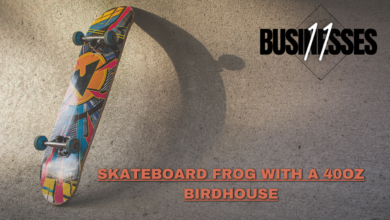Complete Guide: Tinkerdinky?

When I first came across tinkerdinky, I wasn’t sure what to expect. It sounded fun, almost quirky, but I needed to understand what it really was.
After researching and learning more, I found that It is all about creativity, invention, and fun. People of all ages use It to express themselves by making small, imaginative creations. Whether it’s arts, crafts, or even small gadgets, It is a term that has started to represent a community of inventors and creators who love to tinker.
How Does Tinkerdinky Encourage Creativity?
Creativity is the heart of tinkerdinky. When we engage with it, we let our imaginations run wild. It allows us to build things from the materials we have around us, encouraging us to think outside the box.
Whether it’s making a tiny robot from spare parts or turning old fabric into a puppet, It fosters innovation in the simplest ways.
Kids, especially, love the concept because it lets them transform their ideas into something real, without the need for expensive tools or materials. And as adults, we get to rediscover the joy of making things with our own hands.
How Can You Start Tinkering with It?
One of the best things about It is how easy it is to start. You don’t need any special tools or skills. All you need is your imagination and a few basic materials.
For example, if you’re interested in crafting, grab some paper, glue, and scissors, and you can start making little models or decorations.
If you enjoy working with gadgets, maybe look around your house for some old electronics to take apart and see what you can create from the pieces. Starting small is key, and soon, you’ll find yourself getting better with each project.
Who Can Participate in It?
Anyone can take part in It. There’s no age limit or skill requirement. Whether you’re a kid making crafts with paper or an adult tinkering with gadgets, everyone can enjoy the process. The beauty of It is that it’s inclusive.
It’s a way for families to bond over projects or for friends to challenge each other to create something new. Even schools have started incorporating It into their art and science curriculums because it’s a fun way to teach hands-on learning.
What Are the Benefits of It?
There are so many benefits to embracing It. First, it helps develop problem-solving skills. When you’re working on a project and something goes wrong, you have to think of creative solutions. Secondly, It promotes patience.
Projects might not always turn out perfect on the first try, and that’s okay. You learn from your mistakes and keep going. Lastly, it boosts confidence.
There’s nothing quite like the feeling of completing a project and knowing you made it yourself. These benefits make It not just fun, but also educational.
| Benefits of It | Description |
| Develops Creativity | Encourages thinking and creating with available resources. |
| Builds Problem-Solving | Tackling small issues during the process strengthens problem-solving skills. |
| Promotes Patience | Projects may need multiple tries, teaching persistence. |
| Boosts Confidence | Completing a project provides a sense of achievement. |
| Encourages Family Time | Provides a fun way for families to work on projects together. |
How Does It Support Learning?
Tinkering with It projects isn’t just fun; it’s also a powerful learning tool. Kids who engage in It activities tend to develop stronger critical thinking skills because they’re solving real problems through play.
This hands-on learning approach allows them to apply what they’ve learned in school to real-world projects.
For example, they might use math to measure materials or science to understand how machines work. It’s a fun and practical way to reinforce classroom lessons.
Can It Be a Group Activity?
Definitely! One of the best things about It is that it’s perfect for group projects. Whether you’re working with family, friends, or classmates, coming together to create something makes the experience even more enjoyable.
Everyone can bring their own ideas to the table, and together, you can brainstorm and problem-solve as a team. Group tinkering helps strengthen teamwork and communication, as you have to work together to bring your shared vision to life.
Are There It Competitions or Challenges?
Yes, there are many It competitions and challenges that take place both online and in person. Some schools and community centers host local competitions, where participants show off their tinkering skills by building unique projects.
Online, there are even global challenges where people from all over the world participate. These events are a great way to push your skills to the next level and see how your ideas compare with others.
Is It Environmentally Friendly?
When we think about It, one of its cool aspects is how eco-friendly it can be. Many tinkering projects encourage the reuse of old or discarded materials, which reduces waste.
Instead of throwing things away, It teaches us to see potential in items we might have otherwise ignored.
For instance, an old cardboard box can become a toy robot, or a broken lamp can be transformed into a cool new gadget. By reusing materials, It helps us become more mindful of the environment.
What Tools Do You Need for It?
For most It projects, you don’t need anything fancy. Simple tools like scissors, glue, tape, and a ruler can go a long way.
For more advanced projects, you might want to get basic electronics like wires, batteries, and motors, but those aren’t required for everyone.
Many It creations come to life just with paper, cardboard, and everyday household items. The focus is on being resourceful and making use of what you already have at home.
Why Is It Gaining Popularity?
In recent years, It has been gaining a lot of attention. I think this is because more people are looking for creative outlets in their lives, especially in an age where everything feels so digital and fast-paced.
Tinkering offers a break from screens, allowing us to focus on hands-on projects that require patience and thought.
It’s also accessible to everyone, making it easy for people to get involved no matter their age or experience level. Plus, it’s fun! People enjoy the challenge of taking everyday items and turning them into something new and exciting.
Frequently Asked Questions (FAQs) About It
What is It?
It is a term used to describe the act of creating, inventing, or crafting small projects using everyday materials. It encourages creativity, problem-solving, and hands-on learning for people of all ages.
Who can participate in It activities?
Anyone can get involved in It! It’s a fun and accessible activity for kids, adults, families, and even classrooms. There’s no special skill level required, making it open to all.
What materials do I need to start Tinkerdinky?
You don’t need any special tools or materials to begin with tinkerdinky. Everyday items like paper, glue, cardboard, old electronics, and basic household items can be used to create projects. It’s all about being resourceful and using what you already have.
How does Tinkerdinky help with learning?
Tinkerdinky helps develop critical thinking, problem-solving, and hands-on learning. Kids and adults alike use math, science, and creative thinking to complete their projects, applying knowledge in practical ways.
Are there Tinkerdinky competitions?
Yes, there are various tinkerdinky competitions both online and in local communities. These events encourage participants to showcase their creativity and problem-solving skills through unique projects.
Is Tinkerdinky environmentally friendly?
Yes, tinkerdinky often promotes the reuse of materials that would otherwise be thrown away, making it eco-friendly. By repurposing old items, you can reduce waste and make something new.
Can I do Tinkerdinky with my family?
Absolutely! Tinkerdinky is a great group activity. Families can work together on projects, sharing ideas and learning from one another. It’s a fun way to bond while building something creative.
Where can I find Tinkerdinky project ideas?
You can find tinkerdinky project ideas online, in books, or by joining local maker communities. The projects can range from simple arts and crafts to more complex gadget builds, depending on your interest.
What are the benefits of Tinkerdinky for kids?
Kids benefit from tinkerdinky by improving their creativity, problem-solving skills, and patience. It also helps build confidence as they complete their projects, and it’s an enjoyable way to learn through play.
How do I get better at Tinkerdinky?
The best way to improve your tinkerdinky skills is by practicing. Start small with easy projects and work your way up to more complex ones. Experiment with different materials, and don’t be afraid to make mistakes. Every project teaches you something new!
Conclusion
Tinkerdinky is more than just a trend—it’s a movement that encourages creativity, problem-solving, and environmental awareness.
Whether you’re making something alone or with friends and family, the joy of building with your hands is something everyone can enjoy.
Through tinkerdinky, we learn not just how to make things, but also how to think critically, work together, and see the world in a new way. As I’ve discovered, tinkerdinky opens up a world of possibilities, letting everyone feel the pride of making something from nothing.





